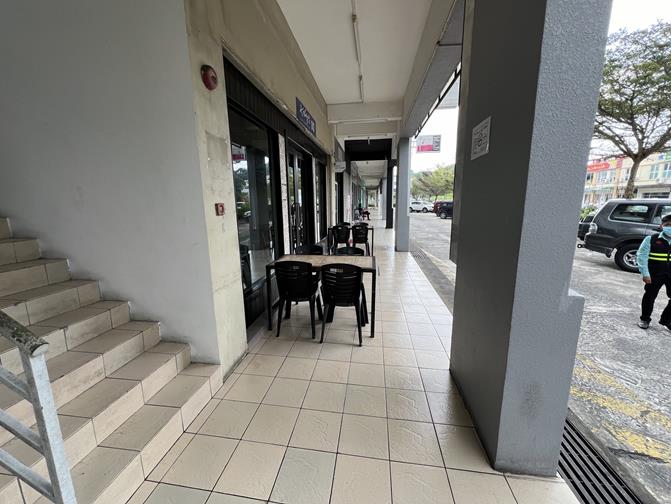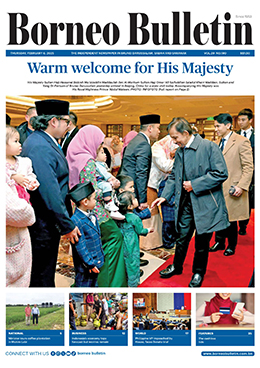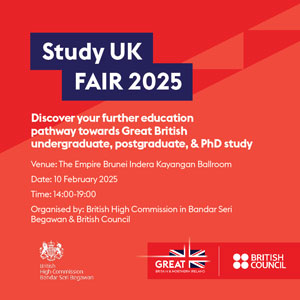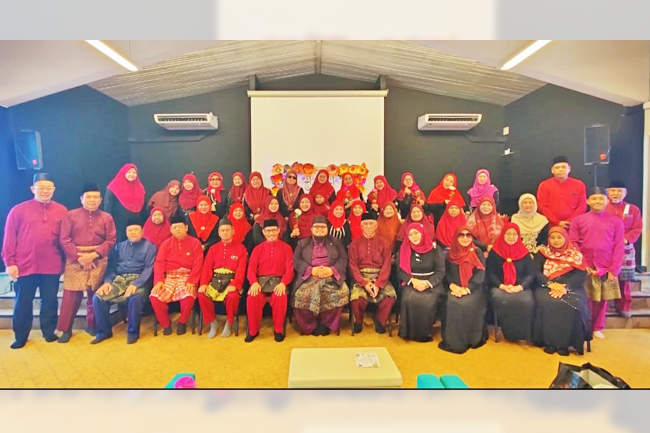
Israk Mikraj ceremony draws community members with unity, faith

Panel discusses importance of charitable contributions for mosques
The Muhammad Salleh Utama Mosque Takmir Committee and the Temburong Mosque Affairs Department organised a forum on Monday to encourage public donations for the Mosque Construction Fund.
The forum aimed to educate attendees about the importance of charitable giving, particularly for mosque construction, and to foster a culture of alms-giving for the benefit of religion, society, and the country.
The event was held at Muhammad Salleh Utama Mosque, in collaboration with the Imarah Section, Temburong Mosque Affairs and the Mosque Construction Fund Secretariat. The forum, chaired by Mosque Affairs Officer Haji Yusli bin Haji Ashli, included panel members Acting Director of Mosque Affairs Haji Amir Hisham bin Haji Masri and Mosque Affairs Officer Pengiran Ahmad Faris Ramadhani bin Pengiran Haji Sellahuddin.
Acting Temburong District Officer Hassan Baha bin Haji Umar was present. – Lyna Mohamad
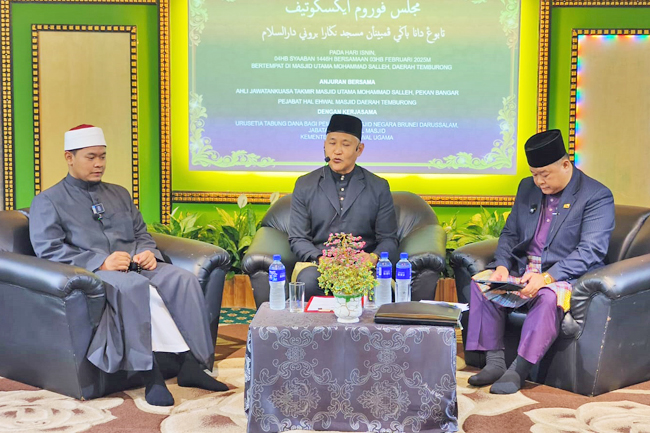
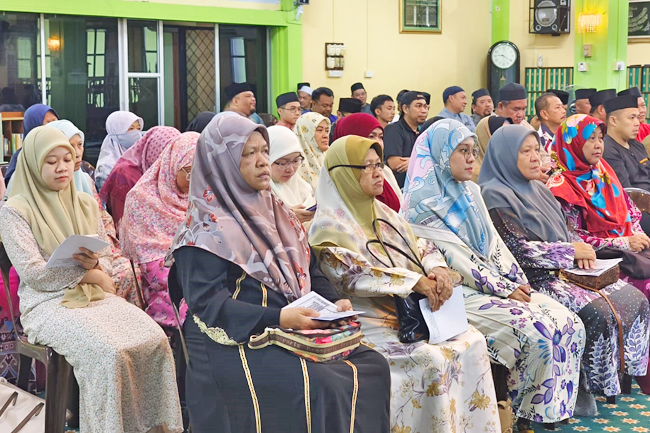
Educators join basic guidance, counselling course
The Islamic Studies Department (JPI) launched a Basic Guidance and Counselling Course for teachers from Arabic and religious schools to enhance school well-being, address social issues and promote mental health awareness.
The seven-day course, began on February 4, is being held at the conference room of Pengiran Anak Puteri Muta-Wakkilah Hayatul Bolkiah Religious School in Kampong Serusop.
Some 20 teachers from Arabic and religious schools are participating in the training.
The opening session was conducted by three facilitators from the Counselling Services Unit of the JPI: Counselling Officer Hajah Masiryanti binti Haji Mashor, Assistant Counselling Officer Emran bin Haji Abdul Rani/Ranee and Trainee Counselling Officer Abdul Hakim bin Omar. Organised by the Counselling Services Unit under the department’s Administration Division, the course aims to equip teachers with the skills and knowledge to support students and school staff in need of guidance and counselling. – Fadley Faisal
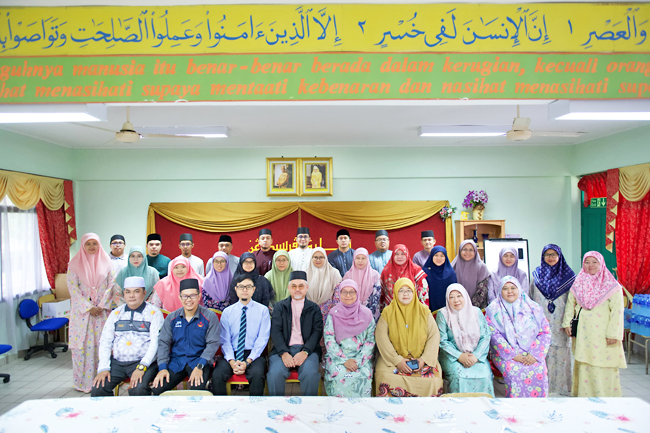
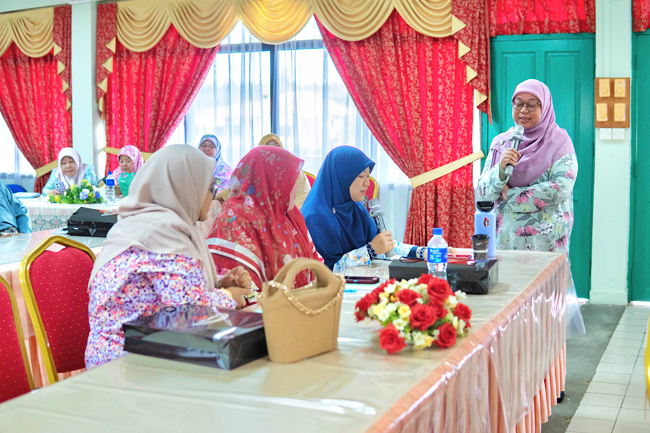
Feast, fun and frugality
There’s something special about gathering friends and family for a lively get-together – an evening of laughter, good food, and cherished memories. But with the cost of living on the rise, entertaining at home can feel like a daunting expense.
The good news? A fantastic gathering doesn’t have to break the bank. With a little creativity, resourcefulness and thoughtful planning, you can host an unforgettable soirée without overspending.
SET THE SCENE WITHOUT THE SPLURGE
Ambience is everything, but that doesn’t mean you need to spend a fortune on decorations. Look around your home for items that can double as décor – fairy lights from the bedroom, candles from the bathroom, or even a string of DIY bunting made from old magazines.
If you’re feeling crafty, repurpose glass jars into lanterns with tea lights or create a centrepiece using fresh herbs or garden flowers.
Theme-based gatherings also add a special touch without added cost.
A retro movie night, a ‘bring a dish’ international feast, or a cosy picnic-style indoor party with blankets and cushions can set the mood effortlessly. Get inventive with what you already own and let creativity lead the way.
DELICIOUS EATS ON A DIME
Feeding a crowd doesn’t mean splurging on gourmet catering. Instead, opt for budget-friendly, crowd-pleasing dishes that are easy to prepare in large quantities.
Pasta bakes, homemade pizzas, or a DIY taco bar allow guests to assemble their meals while keeping costs low.
A potluck-style gathering can also be a lifesaver – ask guests to bring a dish of their choice. Not only does this cut down costs, but it also introduces a variety of flavours to the table.
For snacks, homemade popcorn seasoned with spices, roasted chickpeas and veggie platters with homemade dips can keep the nibbles affordable yet satisfying.
ENTERTAINMENT THAT COSTS NOTHING
Great entertainment doesn’t require hiring a DJ or investing in expensive games. A well-curated playlist can set the right tone for the evening – whether it’s mellow acoustic tunes for a relaxed vibe or upbeat classics for a dance session.
Board games, card games, or even a simple trivia challenge can add an engaging touch to the night. If you have a projector, an outdoor movie screening with homemade popcorn can be a budget-friendly hit. Looking for something unique? Set up a karaoke corner or host a mini talent show – laughter is guaranteed and you know how much we Bruneians love karaoke and jokes.
CREATE LASTING MEMORIES
Capture the evening’s highlights without spending on professional photography. Set up a DIY photo booth using bedsheets or fairy lights as a backdrop, and let guests take candid snaps with their phones. You can even create a hashtag for the night, so everyone can share their pictures and relive the fun later.
A fun way to keep the memories alive is by sending digital thank-you notes or a short video recap of the event. It’s a thoughtful yet cost-free way to make guests feel appreciated and keep the spirit of the gathering alive long after the last guest has left.
THE ART OF HOSTING SMART
Ultimately, hosting on a budget is about focusing on what truly matters – good company, meaningful conversations, and an inviting atmosphere.
It’s the little touches, the personal effort, and the warmth of a well-hosted event that guests will remember, not how much was spent.
By planning wisely, embracing creativity, and involving your guests in the fun, you can turn any gathering into a magical and memorable experience without stretching your wallet.
So go ahead – send out those invites, set the mood, and prepare for an evening to remember!




The cashless tide
The digital payment landscape in ASEAN is evolving rapidly, driven by increasing financial inclusion, e-commerce expansion, and the growing adoption of digital financial services (DFS).
Digital payments already constitute over 50 per cent of transactions across the region, with projections indicating a surge to USD416.60 billion by 2028.
Despite this momentum, regulatory fragmentation, interoperability issues, and security risks continue to challenge seamless integration.
DIGITAL PAYMENTS: A CATALYST FOR ECONOMIC GROWTH
According to a policy brief by the Economic Research Institute for ASEAN and East Asia (ERIA), authored by Manager for Digital Innovation and Sustainable Economy at ERIA, Mahirah Mahusin and Research Associate at ERIA, Hilmy Prilliadi, digital payments have played a transformative role in ASEAN’s financial ecosystem.
Citing research, in 2021, they accounted for 82 per cent of the region’s DFS revenue.
And by 2023, digital payments had become the dominant mode of transaction, accounting over half of transactions, reinforcing financial inclusion and supporting micro, small, and medium-sized enterprises (MSMEs).
Notably, e-wallets have significantly bolstered e-commerce, with Vietnam and Indonesia reporting 25 per cent and 39 per cent of transaction values via e-wallets, respectively.
In line with this progress, ASEAN has made considerable progress in fostering cross-border digital payments.
The Committee on Payment and Settlement Systems has spearheaded initiatives such as the ASEAN Payments Policy Framework for Cross-border Real-Time Retail Payments, finalised in 2019.
More recently, eight ASEAN member states (AMS) have signed a memorandum of understanding under the Regional Payments Connectivity initiative, facilitating cross-border QR code payments in countries including Cambodia, Indonesia, Malaysia and Thailand.
Additionally, integration efforts are extending to Hong Kong, India, and Japan, with potential region-wide expansion.
Parallel to these developments, ASEAN has introduced a local currency transaction framework to reduce reliance on the US dollar, addressing challenges such as thin liquidity, costly hedging tools and regulatory inconsistencies.
However, full-scale implementation requires further infrastructure development, regulatory harmonisation, and technological innovation.

ADDRESSING KEY CHALLENGES
Despite these advancements, ASEAN’s digital payment ecosystem faces significant hurdles that must be addressed to ensure seamless regional integration.
INTEROPERABILITY CONSTRAINTS
While nine AMS have adopted ISO 20022 for retail payment systems and eight have established national QR payment channels, some remain in the early stages of integration.
The lack of uniform adoption hinders the ASEAN Interoperable QR Code Framework’s full potential.
The expansion of interoperability beyond person-to-merchant transactions to merchant-to-merchant interactions requires standardised protocols and collaboration among providers to enable frictionless cross-border transactions.
SECURITY AND DATA PROTECTION RISKS
Ensuring digital payment security remains a critical challenge. As highlighted in the ASEAN Payments Policy Framework, digital transactions expose consumers to risks such as unauthorised data disclosure and fraud.
To mitigate these threats, DFS providers must prioritise advanced encryption, multifactor authentication and consumer education. Additionally, adherence to data privacy laws, transparency in service terms and efficient dispute resolution mechanisms are essential.
REGULATORY FRAGMENTATION
Diverse regulations across AMS present another obstacle to cohesive digital payment adoption.
Variations in foreign ownership limits, e-wallet spending caps and minimum capital requirements create inconsistencies.
Furthermore, FinTech-driven big data usage has outpaced regulatory developments, necessitating clearer guidelines to balance innovation with consumer protection.
REGULATORY MODELS: STRIKING A BALANCE
Globally, digital payment regulations vary between rules-based and principles-based models. The rules-based approach, as seen in India, provides clear compliance guidelines but may lack flexibility.
Meanwhile, the European Union and Singapore employ a principles-based model that encourages adaptability but can lead to regulatory inconsistencies.
ASEAN’s diverse economic structures and legal systems suggest a hybrid model – combining clear regulatory standards with adaptable implementation – would be most effective. Such an approach would harmonise high-level principles with local regulations, ensuring financial stability while fostering innovation.
POLICY RECOMMENDATIONS FOR SUSTAINABLE GROWTH
To address these challenges and enhance ASEAN’s digital payment ecosystem, ERIA’s policy brief outlines several key recommendations:
Enhancing Regulatory Harmonisation
Ensure that commitments under the ASEAN Digital Economy Framework Agreement (DEFA) align with AMS regulations and promote interoperability.
Establish a cross-sectoral coordination platform for finance, trade, and competition authorities to drive regional digital connectivity efforts.
Strengthening Technical Infrastructure
Develop a unified technical framework for payment interoperability, including standardised QR codes and real-time settlement systems.
Encourage the use of application programming interfaces (APIs) to foster seamless integration and innovation in digital payments.
Improving Consumer Protection and Security
Implement unified security protocols, including advanced encryption technologies, regular security audits, and robust incident response mechanisms.
Ensure transparent digital payment regulations, outlining licensing requirements and technical standards for service providers.
Introduce automated dispute resolution systems, such as chatbots, for small-value transactions to enhance consumer confidence.
By adopting these measures, ASEAN can establish a more integrated, secure, and efficient digital payment ecosystem.
As the authors noted, “A well-regulated and harmonised digital payment landscape will be instrumental in driving ASEAN’s economic growth, enhancing financial inclusion, and supporting digital transformation.” – Wardi Wasil
Programme focuses on workplace harmony
The Mosque Affairs Department through the Youth Affairs Division in collaboration with the Sufri Bolkiah Mosque Takmir Committee and Nationwide Mosque Youth, conducted a programme dubbed, ‘Bergema Dalam Kabus – Jiwa Tenang, Siuk Bekeraja’.
The programme, to adapt to a calmer reaction when facing problems at work and learn to accept decisions and instructions positively, took place at the Sufri Bolkiah Mosque in Kampong Perpindahan Berakas and was attended by 30 youth comprising employees in the government sector.
The programme, serves to find a solution through discussions among colleagues who are in disagreement or have problems, aimed at finding out the essence and causes of problems at work and how to seek assistance.
It also shared the limits of interaction between men and women in the Islamic view and how to dress appropriately for women at work. – Lyna Mohamad
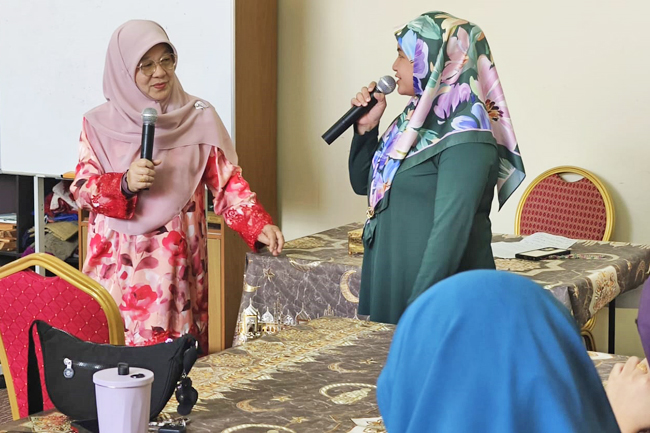
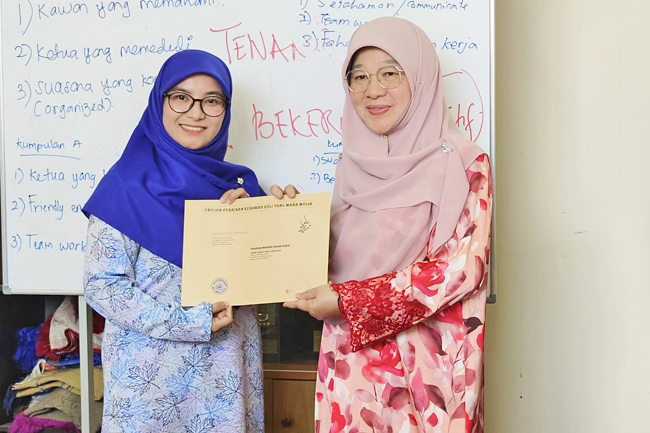
Minister visits Labi Coffee Plantation
Minister of Primary Resources and Tourism Dato Seri Setia Dr Haji Abdul Manaf bin Haji Metussin led a goodwill visit on February 1 to the Syarikat Pertanian Tropikal Utama’s coffee plantation in Kampong Rampayoh, Mukim Labi.
Accompanying the minister were permanent secretaries and officers from the Ministry of Primary Resources and Tourism, who were all welcomed by the plantation owner Yong Khian Fook.
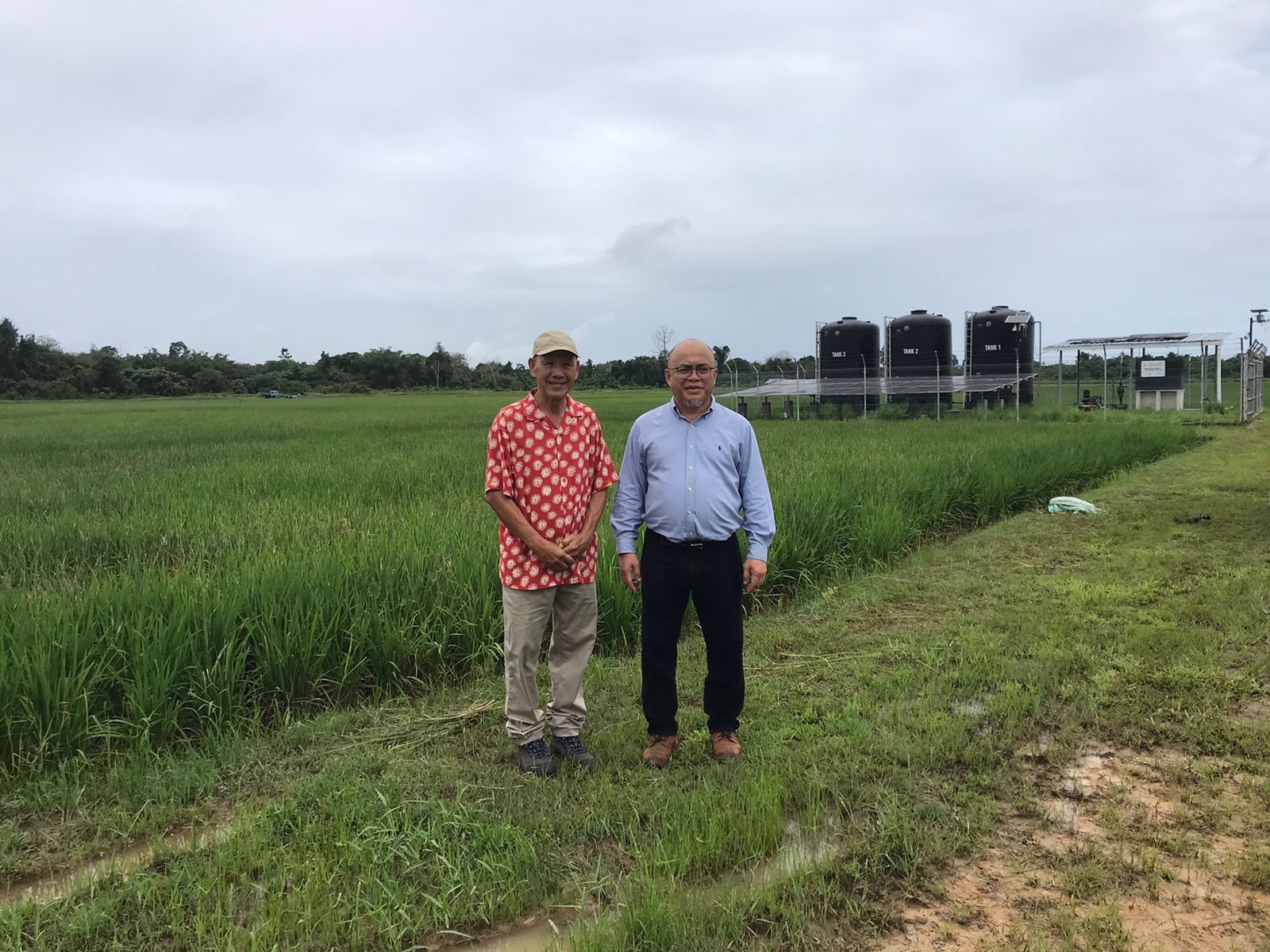
The visit was aimed at observing the growth of the coffee plantation as well as discussion on the development and production of the plantation made over the years. – Daniel Lim


